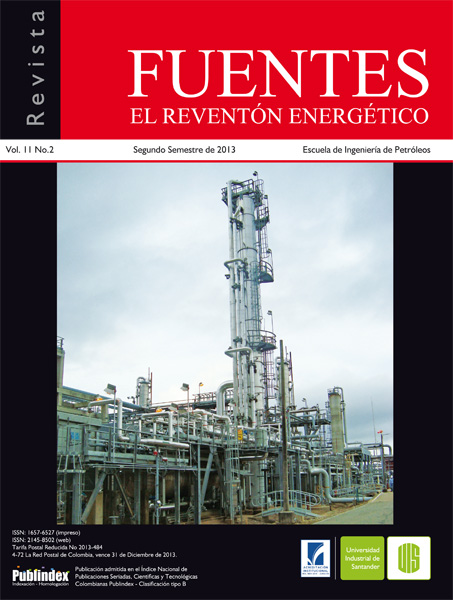Emission estimation of gei (co2 y ch4) generated during the natural gas transport in colombia applying ipcc methodology
Published 2013-12-23
Keywords
- IPCC,
- emissions,
- emission factor,
- greenhouse gases,
- natural gas transport
- Colombia ...More
How to Cite
Abstract
The global warming has motivated many organizations to find different ways to reduce the greenhouse gas emissions. Quantification of these emissions plays a key role in order to determine the environmental impact that human activities generate. Moreover, they are relevant to develop good practices to diminish the levels of these gases in the atmosphere, thereby mitigating climate change. In this work an estimate of the greenhouse gases CO2 and CH4 emissions produced in the natural gas transport in Colombia is carried out. The redictions are based on the IPCC-Intergovernmental Panel on Climate Change- methodology, which is nowadays one of the most applied in different industries. Moreover, potential emissions sources in the natural gas transport network in this country are determined. Finally, conclusions are presented, and some improvements that can be implemented to reduce these emissions are outlined.
Downloads
References
2. J. Martinez y A. Bremauntz. Cambio Climático: Una visión desde México. Mexíco. Noviembre, 2004.
3. Organización Meteorológica Mundial. Boletín sobre los gases de efecto invernadero. Ginebra. Noviembre, 2011.
4. Environmental Protection Agency. Methane Emissions from the natural gas industry. Chicago, 1996.
5. U.S. Environmental Protection Agency. Inventory of U.S.Greenhouse gas emissions and sinks : 1990 - 2011. Washington, 2013.
6. Global Methane Iniciative. Emisiones Mundiales de Metano y oportunidades de Atenuación. Washington, 2011.
7. U.S. Environmental Protection Agency. Global Anthropogenic Non-CO2 Greenhouse Gas Emissions: 1990 - 2030. Washington, 2011.
8. U.S. Environmental Protection Agency. Inventory of U.S.Greenhouse gas emissions and sinks : 1990 - 2009. Washington, 2011.
9. U.S. Environmental Protection Agency. Inventario de Emisiones de Gases de Efecto Invernadero y sumideros EE.UU.1990 – 2009. Washington. Abril, 2011.
10. British Petroleum Company (BP). BP Statistical Review of World Energy. London, 2012.
11. SEDIGAS. Contribución del sector gasista español a los objetivos del paquete verde de la Union Europea.[En línea] [Citado el: 21 de Octubre de 2012.] http://bases.cortesaragon.es
12. British Petroleum Company (BP). BP Energy Outlook 2030. London, 2012.
13. Ministerio De Minas Y Energía . Informe de Gestion Ministerio de Minas y Energía. Bogotá, 2011. p. 137-145.
14. Panel Intergubernamental del Cambio Climático. Directrices del IPCC de 2006 para los inventarios nacionales de gases de efecto invernadero. 2006. vol. 2, capítulo 4. Emisiones Fugitivas.
15. American Petroleum Institute. Compendium of greenhouse gas emissions methodologies for the oil and natural gas industry. August, 2009
